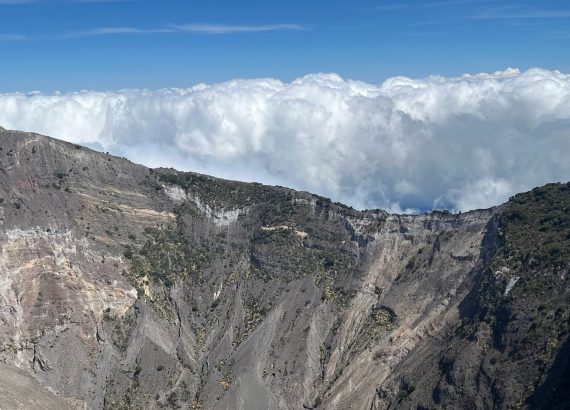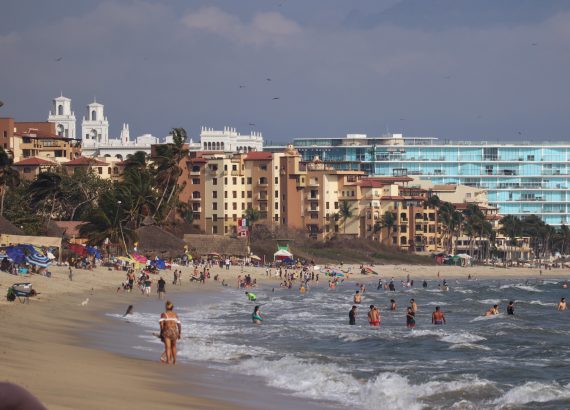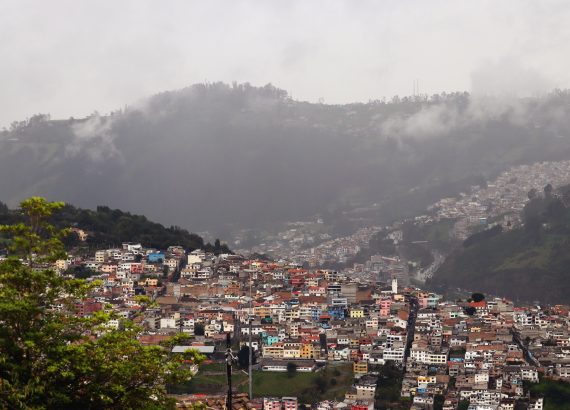Driving four hours from Oaxaca to Puebla, you can fully appreciate the beauty and enormity of the Sierra Madre Mountain range that surrounds both the city and state of Puebla, (6000 ft. above sea level). There are probably very few cities that can boast about the abundance and the grandeur presence of its 16-18th century Baroque architecture. Puebla is known for its Mole Poblano, a sweet spicy chocolate sauce with a kick and for its spicy-spicy Chiles en Nagodo (neither one, my stomach handled well). But more importantly, this city is also known for the Battle of Puebla, celebrated today as Cinco de Mayo when tequila and mezcal takes over the city (and the US). During my 25 day stay, I got to experience much of the cultural diversity of both the city and state of Puebla….
But First a Bit of History…
Early on during the Pre-Hispanic Period, over 8 different ethnic communities inhabited the state of Puebla with the Aztecs dominating the region until the Spanish Conquest in the 15th century. In fact, the Spaniards conquered the region with the help of other tribes who no longer wanted to be under the control of the Aztecs, only later to be dominated by their new colonizer. By the end of the 15th century, the city of Puebla was formed becoming the gateway between the Port of Veracruz and the City of Mexico. Having experienced much prosperity by the 18th century, the city was unsuccessfully attacked by the French, known as Cinco de Mayo. By the 19th century, the city was also known for starting the Mexican revolution movement.
Today, both the state and the city of Puebla are one of the most industrialized areas in Mexico. The city itself is very modern, much like any place in the US, except for the Historic Center, which is a UNESCO heritage designated site well known for its stunning Baroque architecture.
Walking the Streets of Puebla’s Historic Centro
Among entering the Historic center where I stayed, you immediately notice and sense the city’s urban industrial vibe. It is dense, dusty with massive retail and traffic congestion. Beautiful, majestic buildings surround you as you approach the center of the Zocalo (plaza). Some buildings are a bit worn but are significantly larger, having a commanding presence as you approach their doorsteps. The baroque style of architecture is dramatic and decorated with quite a bit of ornamentations, painted ceilings, murals, and other bold features such as Talavera tiles. There is practically a church every couple of blocks, sometimes two on the same block. Their altars and domes are embellished with gold and ornaments much created by the wealth of that time and (let’s not forget) slavery. With so many churches in the city, I wandered how they manage to thrive and maintain these centuries old structures. Are they able to raise sufficient funds from tithe revenue in a country where salaries are extremely low? There is mass held all day Sunday which enable people to attend also allowing retail business to remain open throughout the day. But what else could be supporting these many churches?
Retail here is massive… much more than in Oaxaca. I am perplexed by the amount of retail, much of it repetitive. Easily, there are 100 shoe stores, the same with clothing, cell phones, souvenirs, and other household items. I counted at least 10 optical businesses in a three-block radius. There is an entire street that mostly sells artisan candies and snacks, a very popular tradition here. But there are so many other streets that also sell candies and snacks. For me, it defies my understanding of the economics of a marketplace. Apparently, there is enough traffic to make this work.
The other puzzling feature is the foodie market. Besides restaurants and cafes, there are so many foodie solo-vendors selling food and snacks. Street eating here is extremely popular. There are carts stacked with pots and pans frying tamales, tacos, and other kinds of native dishes. I for one, was concerned about the hygiene factor. There are no inspection or licensing that I saw that would make my weak stomach desirous of these meals (the food snob). Yet many had long lines of folks waiting for their orders. More importantly, I continue to be amazed and inspired at how industrious and entrepreneurial people are in Mexico. The level of creativity in hawking products from morning to night, person to person, is a daily grind that most folks in the states would not do.
During my walks, there were several other incidents that drew my attention. For instance, there are a fair number of beggars, mostly older folks, not as many women as in Oaxaca. I noticed many of the beggars were blind or handicapped. Most of the blind sang or played an instrument. There are quite a few entertainers that put forth creative performances and costumes for donations. At times, I felt like I was in NYC’s Time Square. Puebla, however, is not as festive or colorful as Oaxaca.
Although heavily visited by people,the corridors are well taken care with less garbage on the streets. What most bothered me about the city was the combination of smells. There is so much traffic congestion that the smell of bus and car exhaust with the odor of street food and a poorly maintained sewer system was driving me a bit crazy.
What to do When in Puebla?
Besides visiting many of the churches and the cathedral (the tallest in Mexico) there are numerous museums including the restoration of homes from the 18th century. Two of my favorites were the Mexican Revolution Museum and the Talavera Museum. You definitely want to go to several of the mercados, such as Mercado el Parian and the Callejon de Los Sapos on Saturday. I also attended two Talavara talleres, an iconic tradition unique to Puebla featured in this month’s newsletter. Click here for the link. Finally, I highly recommend doing a couple of tours to visit the state’s Pueblos Mágicos.
What are Pueblos Magicos?
There are 12 Pueblos Magicos (magical towns) in the state of Puebla of 132 designated by the government of Mexico. Pueblos Magicos is a designation given by the Mexican government to towns that are of historical importance, with strong architectural, social, and cultural attributes that offer unique products and services. Most of Puebla’s 12 Pueblos Magicos are within 40 minutes to 2 hours reach of the city. I managed to visit Atlixco, Cholula, Chignahuapan and Zacatlán. All different yet similar in many ways and worthy of a visit (you will not be disappointed). All of them have colonial architecture with beautiful churches as part of their plaza with unique historical, cultural, and economic characteristics. For instance, Atlixco is known for the cultivation of a wide range of native flowers and plants (there are flowers everywhere). Zacatlán is known for its cultivation of apples and the production of apple foodie products. It is also known for its international clock factory and museum. Cholula has one of the largest archaeological Mesoamerican sites and several unique churches with one built on top of a buried pyramid. It is quite a hike to get there but worth the amazing views. Chignahuapan is known to produce specially designed Christmas ornaments. I also attend a town named Chipilo where Italians from Veneto, Italy migrated to this area offering unique cheeses and artisan breads. There are clearly many more Pueblos Magicos to visit, you may possibly arrange to stay overnight in one or two of these towns to reach most of them.
However, what I find most intriguing is the fact that the government of Mexico has come up with a sustainable community development model to keep its small historical towns from experiencing further loss of residents and businesses by becoming tourist destination sites. Some of these are Agri-tourism opportunities combined with historical elements and natural resources to attract visitors. The Mexican government’s investment in this model for local communities is having an impact worthy of replicating in other countries, including the US.
One Last Thing…
As I travel across Mexico, I want to continue to share a bit about my nomadic experiences with regard to both my mental well-being and physical health. I found Puebla’s altitude (6,000 ft) a bit much and found my breathing here more persistent than in Oaxaca. I continued to walk at least 3 miles most days. I worked with a yoga instructor three days a week on my flexibility and to improve my breathing which I found extremely helpful. I also signed up for spinning classes but eventually abandoned them due to the schedule being too rigid. Managing my time and keeping up with my projects, learning about the city and planning ahead is still a work in progress, a bit murky at times.
By my third week in Puebla, I picked up somebody’s cold. I started to have a slight cough that got more severe by the time I got to Mexico City. The combination of both the cough and the breathing was wearing me down and once I arrived, I made arrangements to see a doctor. Let’s see how I manage my first week in Mexico City, which is likely to be extremely low key and uneventful.
My photos of Puebla include its beautiful Baroque architecture, many of the city streets, its people, churches, and my visits to several of the Pueblos Magicos. As always, remember to click the center of the photo for a full view.































































No Comments